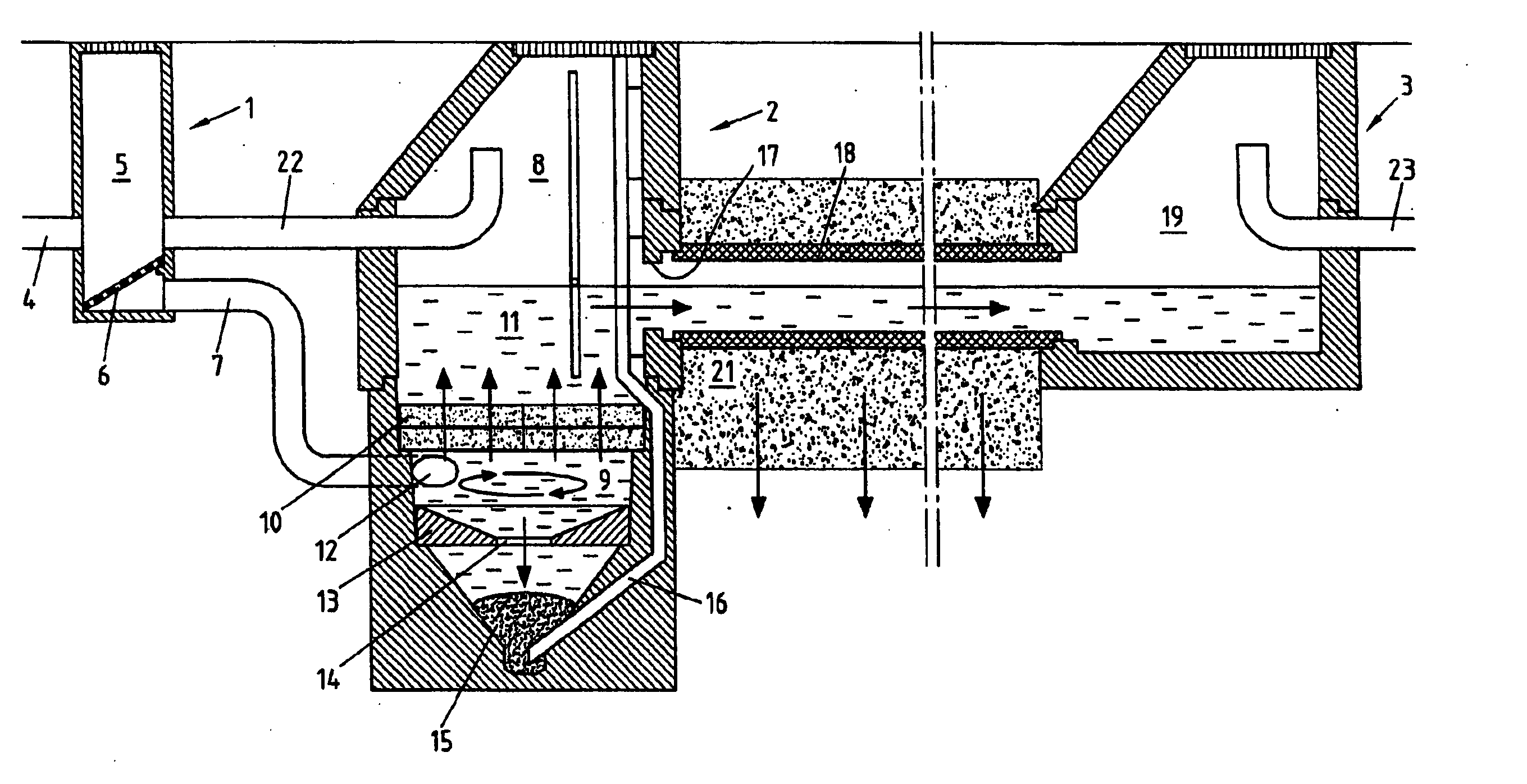Filter element for water loaded with solid particles and dissolved toxic substances and purification system equipped with said filter element
a filter element and water technology, applied in the direction of filtration separation, sewage draining, separation process, etc., can solve the problems of filter element and sink separation of filtered out particles, and achieve the effect of enhancing the adsorption action of the filter, reducing the amount of solid particles and reducing the amount of dissolved toxic substances
- Summary
- Abstract
- Description
- Claims
- Application Information
AI Technical Summary
Benefits of technology
Problems solved by technology
Method used
Image
Examples
Embodiment Construction
[0016] Certain terminology will be used in the following description for convenience in reference only and will not be limiting. The words “upwardly”, “downwardly”, “rightwardly” and “leftwardly” will refer to directions in the drawings to which reference is made. The words “inwardly” and “outwardly” will refer to directions toward and away from, respectively, the geometric center of the device and associated parts thereof. Said terminology will include the words above specifically mentioned, derivatives thereof and words of similar import.
[0017] The purification system represented in FIG. 1 shows three generally vertical shafts arranged in the ground, which are connected to each other via pipes. A first shaft 1 serves as the prefilter for leaves and refuse. A second shaft 2 encloses the main elements of the purification system. A third shaft 3 serves as the control and rinsing shaft. The second shaft 2 may comprise a cylindrical tank adapted to be buried in the ground and is prefe...
PUM
| Property | Measurement | Unit |
|---|---|---|
| grain size | aaaaa | aaaaa |
| grain-size | aaaaa | aaaaa |
| particle size | aaaaa | aaaaa |
Abstract
Description
Claims
Application Information
 Login to View More
Login to View More - R&D
- Intellectual Property
- Life Sciences
- Materials
- Tech Scout
- Unparalleled Data Quality
- Higher Quality Content
- 60% Fewer Hallucinations
Browse by: Latest US Patents, China's latest patents, Technical Efficacy Thesaurus, Application Domain, Technology Topic, Popular Technical Reports.
© 2025 PatSnap. All rights reserved.Legal|Privacy policy|Modern Slavery Act Transparency Statement|Sitemap|About US| Contact US: help@patsnap.com


